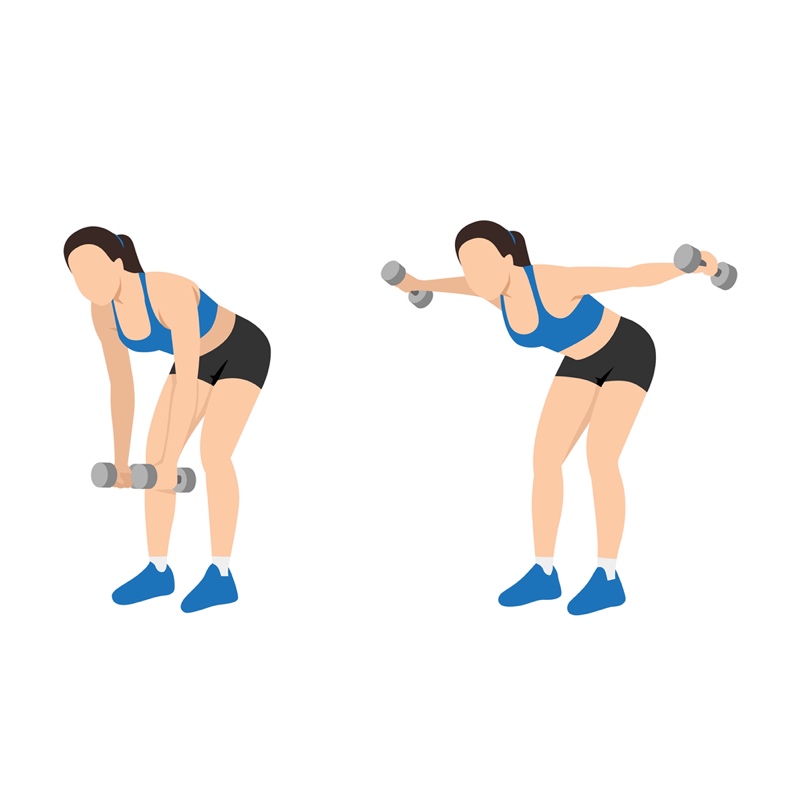Maintaining a strong back is important as we age. It’s essential for overall well-being, mobility, and independence as we get older. A strong back can reduce pain, improve posture, and enhance daily mobility, which contribute to a better quality of life.
Aging brings natural changes like muscle loss, joint stiffness, and a decline in bone density, making it easier to experience back pain, poor posture, and mobility limitations. Strengthening back muscles as we get older is a powerful way to prevent these issues and supports spinal health, balance, and comfort.
In this blog, I’ll discuss the many benefits of a strong back for seniors and how it can help with common health issues that come with aging.

Benefits of a Strong Back as We Age
- Reduces back pain.
- Strong muscles relieve pressure on the spine, reducing chronic pain.
- Enhances balance and stability.
- A strong back supports steadiness, lowering fall risk.
- Improves flexibility and mobility.
- Increased flexibility promotes independence in daily activities.
- Supports bone health.
- Strength training improves bone density, reducing fracture risk.
- Encourages good posture.
- Strong muscles prevent slouching, reducing strain on other muscles.
Common Problems a Strong Back Can Help with as We Age

Here are some of the common problems a strong back can address as we get older:
Arthritis and Joint Pain

Strengthening back muscles can help support and stabilize joints, reducing stiffness.
Degenerative Disc Disease

A strong back can distributes pressure evenly, easing discomfort.
Osteoporosis

Maintaining a strong back builds bone density to protect against fractures.
Kyphosis

Strong back muscles can help prevent rounding of the back with strong upper back muscles.
Sciatica and Nerve Pain

Regularly doing back exercises can reduces spinal compression, easing nerve pain.
Exercises to Strengthen Your Back as You Age
Strengthening the back doesn’t have to involve heavy weights or complex exercises. Gentle, regular activities can make a huge difference. Here are some simple exercises to try:
Resistance Band Pull-Apart

Equipment
Resistance band
Benefits
Strengthens the upper back, specifically the shoulder and scapular muscles.
How to Do It
- Stand with feet shoulder-width apart, holding a resistance band in both hands.
- Keep arms extended in front of you at chest level with a slight bend in the elbows.
- Pull the band apart by squeezing your shoulder blades together.
- Slowly return to the starting position and repeat.
Wall or Knee Pushups


Equipment: None
Benefits
Engages the upper back and core while building shoulder stability.
How to Do It
- Place your hands on a wall or, if on your knees, on the floor, with hands slightly wider than shoulder-width.
- Keep your core engaged and lower your body by bending your elbows.
- Push back up to the starting position and repeat.
Single-Arm Bent-Over Dumbbell Rows

Equipment: Dumbbell
Benefits
Works the lats, traps, and rhomboids, key muscles in your back for strength and posture.
How to Do It
- Stand with feet hip-width apart, holding a dumbbell in one hand.
- Hinge at the hips, keeping your back flat, and let the dumbbell hang down.
- Pull the dumbbell toward your hip, squeezing your shoulder blade back.
- Lower the weight back down and repeat, then switch sides.
Rear Lateral Raise

Equipment: Dumbbells
Benefits
Strengthens the upper back, focusing on the rear deltoids and the muscles around the shoulder blades.
How to Do It
Stand with feet shoulder-width apart, holding a dumbbell in each hand.
Hinge slightly forward at the waist with a flat back.
Raise your arms to the side until they align with your shoulders, keeping a slight bend in your elbows.
Lower back down slowly and repeat.
Renegade Row or Plank and Row

Equipment: Dumbbells
Benefits
Engages the back, shoulders, core, and biceps, making it a full-body movement.
How to Do It
- Start in a high plank position with a dumbbell in each hand.
- Keep your core tight and your body stable.
- Row one dumbbell up toward your hip, keeping your elbow close to your body.
- Lower the dumbbell back down and switch to the other side.
Wall Angels

Standing with your back against the wall, raise your arms up and down like a snow angel to strengthen your shoulder and upper back muscles.
Regular Walking

Walking is excellent for overall strength and supports the back, especially when done with good posture.
A strong back is truly a gift to yourself as you age. By investing in back strength now, you’re preparing for a future where you can stay active, avoid pain, and remain independent longer. Whether you’re enjoying a new hobby, spending time with family, or simply going about your daily life, a strong back can support you every step of the way.
How To Have a Safe and Effective Back Workout
Focus on Form
Make sure each movement is controlled and precise. Incorrect form can lead to injury.
Engage Your Core
A strong core supports your back during exercises, making each movement more effective.
Progress Gradually
Start with lighter weights or lower resistance bands, and gradually increase as you get stronger.
Include Rest
Your muscles need time to recover and grow stronger. Aim for at least one rest day between back workouts. Rest days are crucial for muscle recovery and growth. They allow your muscles to repair and rebuild, which is essential for getting stronger and preventing overtraining.
Improved Quality of Life
A strong back is the foundation of a healthy and active life Start with these simple exercises and gradually build strength, enjoying the benefits of better posture, reduced pain, and a boost in confidence. Make back training a part of your weekly routine and watch as your quality of life improves along with your strength. Before starting an exercise routine, consult a healthy and wellness coach or medical professional. If you need help with creating a plan to strengthen your back, contact me.








